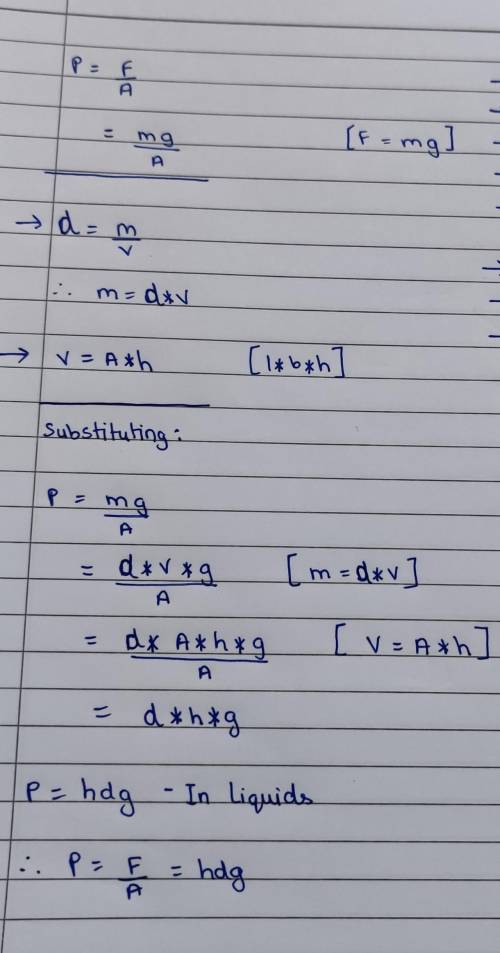
Physics, 14.07.2020 20:01 paolaz80045
Why is pressure in liquids not dependent on the area of surface on which it acts? so according to the equation I have shared, Doesn't it actually mean that pressure in liquids are dependent on the area of surface on which it acts?Since hdg is nothing else but F/A .


Answers: 2


Other questions on the subject: Physics


Physics, 22.06.2019 11:30, lezapancakes13
Achlorine atom has 17 protons and 18 neutrons. what is its mass number? what is its atomic number?
Answers: 2

Physics, 22.06.2019 15:00, tanaemichel
Sodium chloride, nacl, is formed when a sodium atom transfers its electron to a chlorine atom. the difference in charge between the two atoms creates a(n) attraction that bonds them together.
Answers: 1

Physics, 22.06.2019 15:10, maudiejane
An important dimensionless parameter concerned with very high-speed flow is the mach number, defined as v/c, where v is the speed of the object such as an airplane or projectile, and c is the speed of sound in the fluid surrounding the object. for a projectile traveling at 1170 mph through air at 50 ˚f and standard atmospheric pressure, what is the value of the mach number?
Answers: 2
You know the right answer?
Why is pressure in liquids not dependent on the area of surface on which it acts?
so according to t...
Questions in other subjects:

English, 10.12.2020 06:40




Mathematics, 10.12.2020 06:40

History, 10.12.2020 06:40




Mathematics, 10.12.2020 06:40



